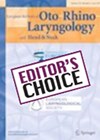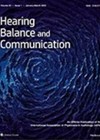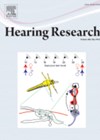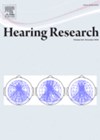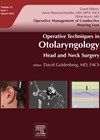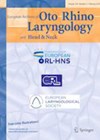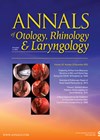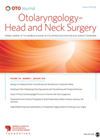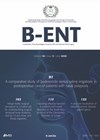
Journal Reviews
Magnetic resonance imaging (MRI) head without general anesthesia in children
‘Physician heal thyself’: this biblical proverb has an increasing importance in modern healthcare systems, especially when we consider the rising incidence of physical and mental burnout amongst all staff. Musculoskeletal disorders are increasing – according to the Work-Related Musculoskeletal Disorders...
Expectations and practice
Reading this paper is reassuring. It does not appear to be groundbreaking in its results but research can be as useful, if not more so, when it consolidates knowledge and helps unify the research base. This paper focuses on those...
Cognitive development in children with cochlear implants
This systematic review investigates the comparative cognitive outcomes in children using bilateral versus unilateral cochlear implants, as well as those using cochlear implants versus hearing aids. The review synthesises findings from 30 studies involving a total of 11,986 children and...
Management of post-tonsillectomy bleeding with nebulised TXA
In the last 20 years, rates of adult tonsillectomy have fallen in the order of 50%. The flipside to this, is that the number of admissions of patients with acute tonsilitis is more than double the reduction in tonsillectomy rates....
Not to be mis-underestimated
It is a very rare occurrence to find a paper looking at NF2 and the auditory system. There seems to only be a couple on NF2 prevalence in the population, so this is unsurprising. As far as I can recall...
Tinnitus without hearing loss – inflammation?
Inflammation can have a profound impact on multiple systems. Certainly in recent years, autoimmune conditions are on the rise and the impact on audiovestibular symptoms have been documented. Given the rates in the population, the impact of inflammation on the...
Paediatric conductive hearing loss management
This review article discusses the current guidelines for the management of paediatric otitis media, tympanostomy tube placement indications, management of risk factors for chronic otitis media, intraoperative and postoperative management guidelines and the management of complications. The important takeaways include...
Vestibular function preservation after minimally invasive paediatric cochlear implantation
This retrospective study analysed results in 24 paediatric patients with low-frequency residual hearing before and after minimally invasive cochlear implantation. The authors define minimally invasive cochlear implantation as a round window insertion of flexible Nucleus CI422, Nucleus CI522, MedEl Flex...
Newborn sensorineural hearing loss – what is the incidence?
In the last two decades, the introduction of newborn screening for hearing loss has dramatically lowered the average age of newborn hearing loss diagnosis to around two to three months of age. The benefits of early diagnosis are manifold, enabling...
Corticosteroid prescribing in ENT - are we at risk of being sued?
Of medications leading to malpractice claims, corticosteroids comprise the third most common. They are used widely and have a significant side-effect profile: hypertension, lipodystrophy, diabetes, avascular necrosis of the femoral head, peptic ulceration and psychiatric reactions to name but a...
Clinical Practice Guideline on Tympanostomy Tube in Children Update (AAO-HNS)
The American Academy of Otolaryngology–Head and Neck Surgery Foundation’s ‘Clinical Practice Guideline: Tympanostomy Tubes in Children (Update)’ has been recently published - an update of the original 2013 guideline. This article forms an executive summary to accompany the full guideline....
Septoplasty under local and general anaesthetic
This Turkish prospective, non-randomised study compared the quality of life outcomes in 50 patients who underwent local anaesthetic (LA) septoplasty, and 50 patients who underwent general anaesthetic (GA) septoplasty over a six-month period. Quality of life outcomes were measured using...

